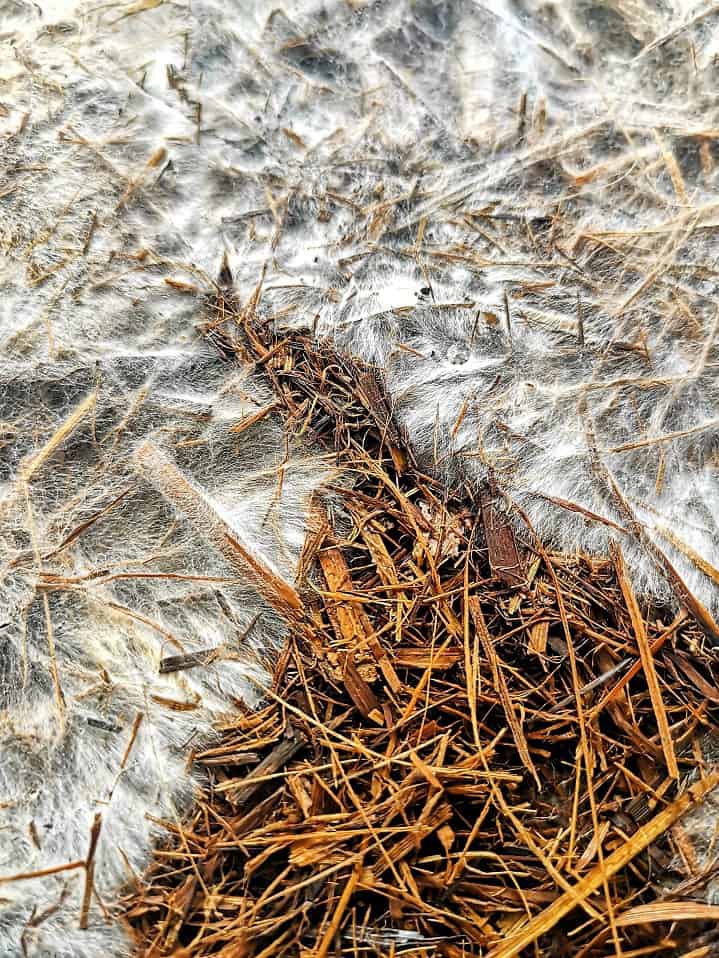Pleurotus Ostreatus is known as the white, pearl, beige, or grey oyster mushroom amongst a multitude of other names. Depending on where you are and who you’re talking to the white oyster species being referred to may be different due to the varying range of qualities.
Some ‘white oyster’ mushrooms are suitable for growing during the summer months, others are more suited to growing in winter. These impressive giants develop thick meaty caps when grown on hardwood and given plentiful fresh air.

What Do White Oyster Mushrooms Taste Like?
White oyster mushrooms pack a big umami punch with every mouthful. More subtle in flavour than pink oyster mushrooms but with a thicker and meatier texture. Ideal for soups, stir-fries and deep-frying.

What Substrate Does White Oyster Grow On?
White oyster mushrooms will grow on a wide range of materials including sugar cane mulch, straw, hardwood, paper and coffee grounds.
For beginners we recommend starting with straw or chopped sugar cane mulch. Supplementation can be added in the form of coffee grounds or bran but will increase the chances of contamination.
White oyster mushrooms are considered to be a side-fruiting mushroom compared to the king oyster or button mushroom which are top-fruiting mushrooms.

Opening A White Oyster Grow Kit
In order to grow, white oyster mushroom grow kits will need to be opened exposing the fully colonised substrate to fresh air and humidity.
Bulging white clusters of coral-like primordia will form on the surface of the substrate. These clusters will develop into mushrooms. At times these clusters may form under the plastic and can either be released to fruit or left to abort.
Primordia formation can be influenced by making a small opening for fruiting and folding the bag tight against the substrate. This will encourage the mycelium to produce primordia close to the cut where it senses both fresh air and humidity.
Please note that white oyster mushroom is vigorous and will fruit prematurely within the bag if left unattended.


White Oyster Mycelium Appearance
White oyster mushroom mycelium is incredibly vigorous. The mycelium is opaque, white and fast growing. After initially colonising the substrate it will continue to grow thicker as it matures.
Maturing mycelium will begin to produce a yellow liquid. This is a metabolite which is a natural excretion of the mycelium.
Any primordia which has formed prematurely, or in-vitro can be removed prior to using the spawn as usual.
White Oyster Spawn Run
White oyster mushrooms will colonise both grain spawn and substrates very quickly. Full colonisation can often expected within 7 – 10 days.

Greenhouse Fruiting Chambers
White Oyster Pinning Conditions
No special are requirements to trigger pinning on white oyster mushrooms. These will often begin pinning on their own if left unattended.
Ensure that they are receiving over 70% humidity with generous amounts of fresh air exchange to encourage large caps.

White Oyster Fruiting Conditions
Summer varieties: 16 – 30 degrees Celsius (60 – 86F)
Above 85%RH
Winter varieties: 13 – 20 degrees Celsius (55 – 70 F)
Above 85%RH
These values are to be used as a guide only due to the differences between white oyster varieties available. White oyster mushrooms require more fresh air than pink oyster but less than king oyster.
Using A Humidifier
Humidity can be managed through a diligent misting and fanning regime, however the introduction of a humidifier and humidity controller can help automate the process and ensure consistency.
Adding a 6L humidifier and controller to a greenhouse with the addition of a USB fan is a quick and easy way to make a low cost fruiting chamber that delivers excellent results.
Making A Fruiting Chamber
Mushrooms require humidity to grow. We recommend using a mini-greenhouse. Spraying the inside walls of the greenhouse will help raise humidity. A cheap humidifier can used to automate the process.
It’s important to ensure that the grow kit has fresh air exchange. Mushrooms produce carbon dioxide and will grow long and leggy if they require more oxygen.
Check the product pages for species specific requirements.
Alternatively you can build a Shotgun Fruiting Chamber (SGFC) from a few common items found easily in your local hardware store.







